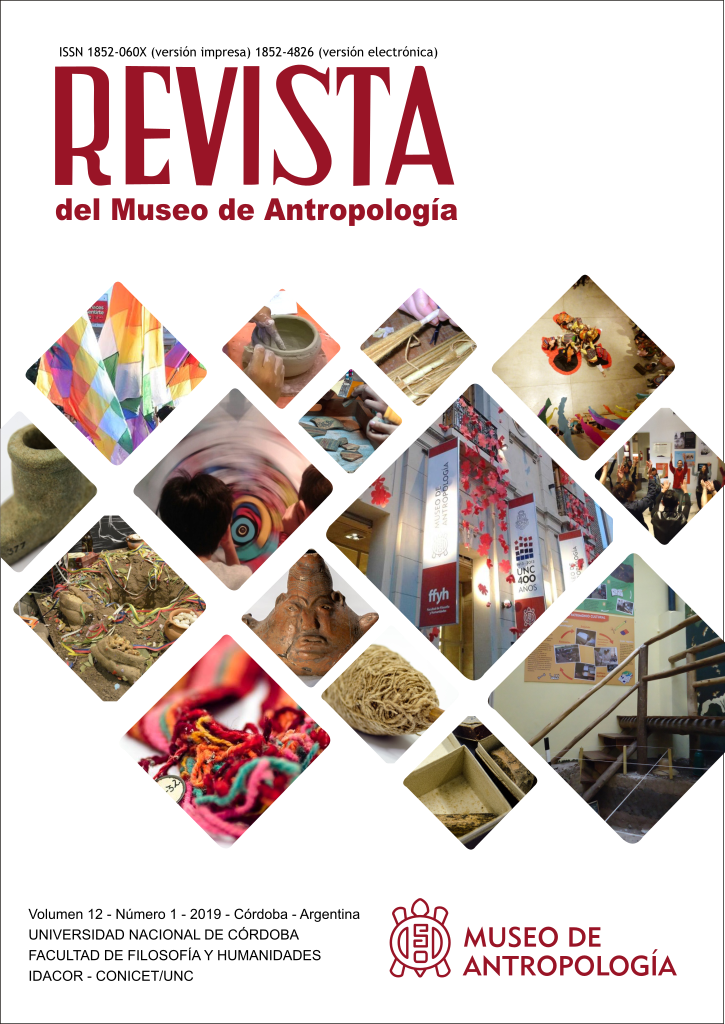A fossil shark tooth used as a pendant at the Punta Medanosa archaeological locality (north coast of Santa Cruz)
DOI:
https://doi.org/10.31048/1852.4826.v12.n1.19436Keywords:
“Isurus” hastalis, ecofact, shellmidden, personal adornmentAbstract
During a surface sampling of archaeological materials on a shellmidden in the Punta Medanosa locality, a fossil shark tooth clearly associated was recovered. The location of the shellmidden on a matrix of erosion dunes, seated on late Holocene cordons, allowed us to affirm that this finding corresponded to a ecofact or biofact, that is, a natural product transported to this site. Subsequently, by means of macro and microscope laboratory analysis work, it was found that it was a modified artefact by polishing and notching, which would have allowed its use as a pendant, probably as a corporal adornment. In this note, a description of the recovered piece is presented, as well as the studies carried out to support its allocation as a corporal adornment.
Downloads
References
Arratia, G., A. L. Cione (1996). The fish fossil record of Southern South America. Münchener Geowissenschaft Abhanlungen, 30: 9-72
Betts, M., S. Blair y D. Black (2012). Perspectivism, mortuary symbolism, and human-shark relationships on the Maritime Peninsula. American Antiquity, 77(4): 621-645. DOI: https://doi.org/10.7183/0002-7316.77.4.621
Bonomo, M. (2006). Un acercamiento a la dimensión simbólica de la cultura material en la región pampeana. Relaciones de la Sociedad Argentina de Antropología XXXI:89-115
Castro, A., A. L. Cione, T. Civalero y M. De Nigris (2012). A Fossil Shark Tooth in Early Contexts of Cerro Casa de Piedra 7, Southwest Patagonia Argentina. L. Miotti, M. Salemme, N. Flegenheimer, y T. Goebel (Eds.), Southbound Late Pleistocene Peopling of Latin America: 165-176. Center for the Study of the First Americans, Texas A&M University, College Station.
Cione, A., M. Bonomo. (2003). Great white shark teeth used as pendants and possible tools by Early-Middle Holocene terrestrial mammal hunter-gatherers in the eastern Pampas (Southern South America). International Journal of Osteoarchaeology, 13: 222-231. DOI: https://doi.org/10.1002/oa.678
Cione, A. L., D. Cabrera y M. Barla. (2012). Oldest record of the Great White Shark (Lamnidae, Carcharodon; Miocene) in the Southern Atlantic. Geobios, 45(2): 167-172. DOI: https://doi.org/10.1016/j.geobios.2011.06.002
Colvin, G. (2011). The presence, source and use of fossil shark teeth from Ohio archaeological sites. Ohio Archaeologist, 61(4):26-46.
Constante, M. (2001). “Geomorfología y geología de Ensenada Ferrer, Provincia de Santa Cruz”. Departamento de Ciencias Geológicas, Universidad de Buenos Aires, tesis de Licenciatura.
Drew, J., C. Philipp y M. Westneat (2013). Shark tooth weapons from the 19th century reflect shifting baselines in Central Pacific predator assemblies. PlosOne, 8(4): e59855. DOI: https://doi.org/10.1371/journal.pone.0059855
Ehret, D., B. Macfadden, D. Jones, T. DeVries, D. Foster y R. Salas-Gismondi (2012). Origin of the white shark Carcharodon (Lamniformes: Lamnidae) based on recalibration of the Neogene Pisco Formation of Peru. Palaeontology, 55: 1139-1153. DOI: https://doi.org/10.1111/j.1475-4983.2012.01201.x
Fujita, H., C. Cáceres-Martínez y A. F. Ainis (2017). Pearl Ornaments from the Covacha Babisuri Site, Espíritu Santo Island, Baja California, Mexico. Pacific Coast Archaeological Society Quarterly, 53(2-3): 63-86.
Godfrey, S. (2013). Modified fossil Mako teeth. The Ecphora, 28(4): 2-4.
Lowery, D., S. Godfrey y R. Eshelman. (2011). Integrated geology, paleontology, and archaeology: native american use of fossil shark teeth in the Chesapeake bay. Archaeology of Eastern North America, 39: 93-108.
Medina, R., M. Aguirre, J. Codignotto, S. Richiano y L. Mormeneo (2014). Geoformas, malacofauna y evolución costera durante el Holoceno en Ensenada Ferrer (Santa Cruz, Patagonia, Argentina). Revista de la Asociación Geológica Argentina 71(1): 69-81.
Panza, J., M. Márquez y M. Godeas (1994). Descripción de la Hoja Geológica 4966-I y II “Bahía Laura”, Provincia de Santa Cruz. Servicio Geológico Minero Argentino, Instituto de Geología y Recursos Minerales, Buenos Aires.
Ward, D. J., C. G. Bonavia (2001). Additions to, and a review of, the Miocene shark and ray fauna of Malta. The Central Mediterranean Naturalist, 3: 131-146.
Zubimendi, M. A., P. Ambrústolo y M. A. Andolfo (2007). Informe de las actividades de clasificación y catalogación de la colección privada Miksa-Knoop. E. Knoop (ed.), Arte lítico Tehuelche. Legado de la Patagonia: 77-187, Editorial Dunken, Buenos Aires.
Downloads
Published
How to Cite
Issue
Section
License
Those authors who have publications with this Journalaccept the following terms:
a. Authors will retain their copyrights and guarantee the journal the right of first publication of their work, which will be simultaneously subject to the Creative Commons Attribution License (Licencia de reconocimiento de Creative Commons) that allows third parties to share the work as long as its author and his first publication in this journal.
b. Authors may adopt other non-exclusive licensing agreements for the distribution of the version of the published work (eg, deposit it in an institutional electronic file or publish it in a monographic volume) provided that the initial publication in this journal is indicated.
c. Authors are allowed and recommended to disseminate their work on the Internet (eg in institutional telematic archives or on their website) before and during the submission process, which can lead to interesting exchanges and increase citations of the published work. (See The Effect of Open Access - El efecto del acceso abierto)












